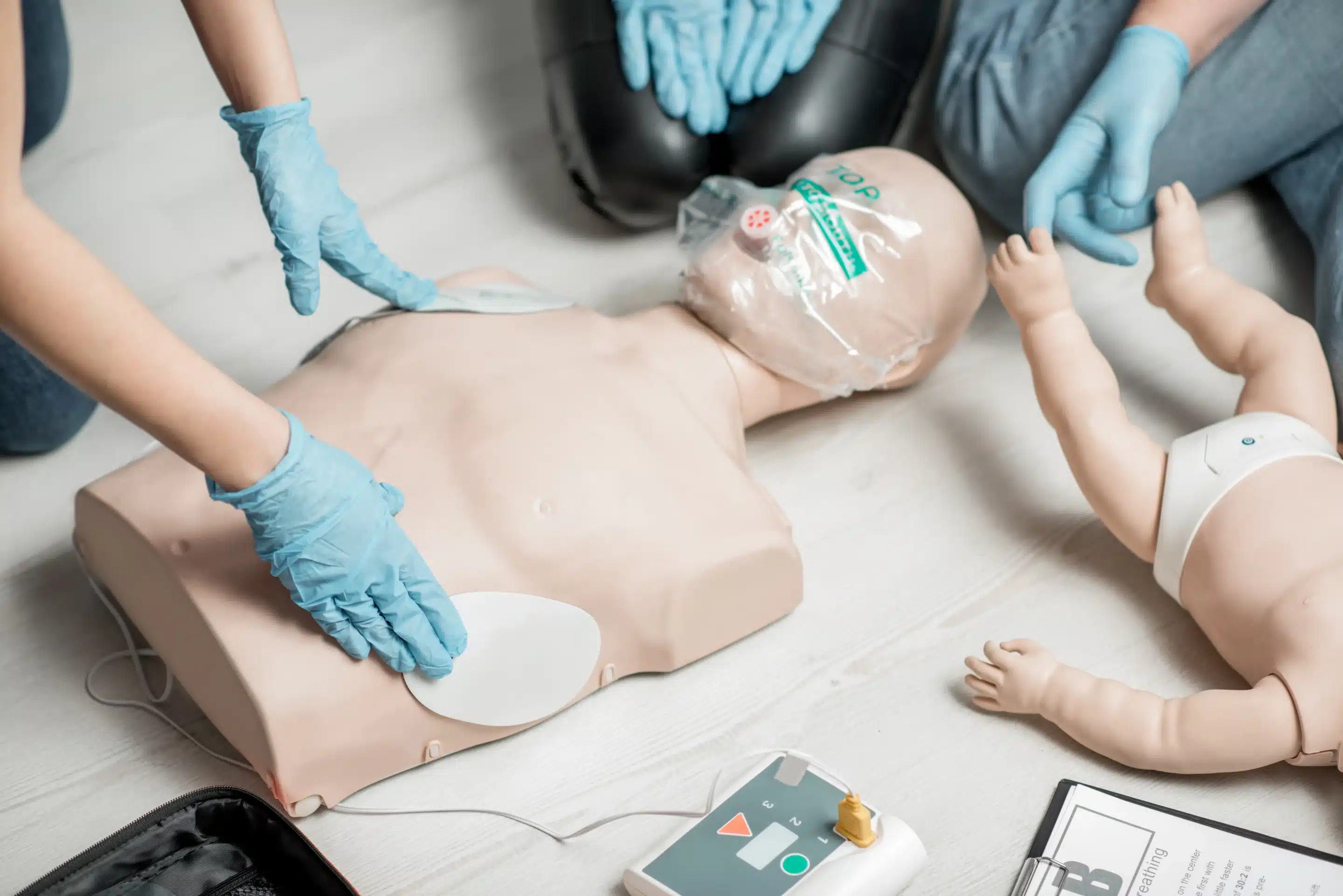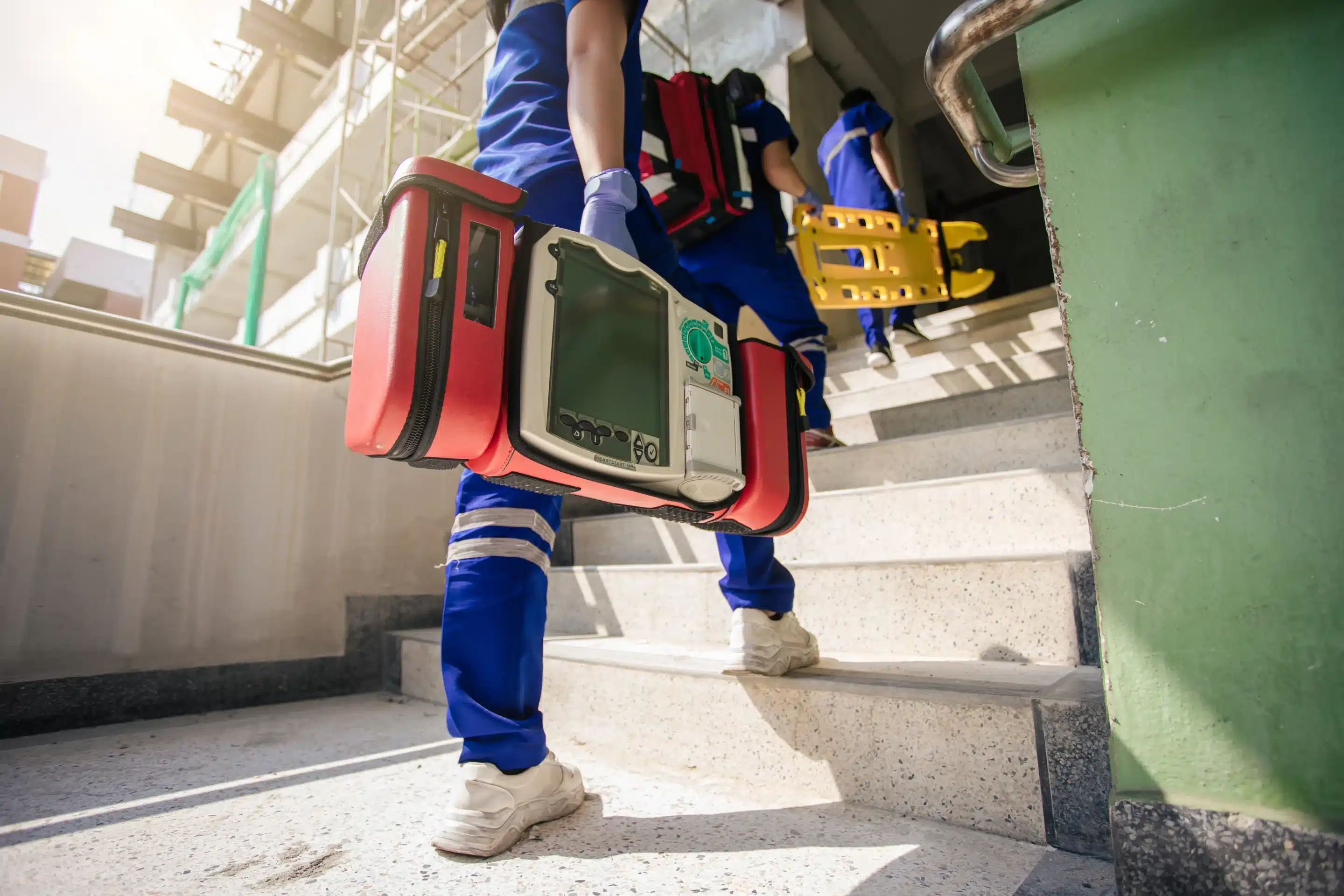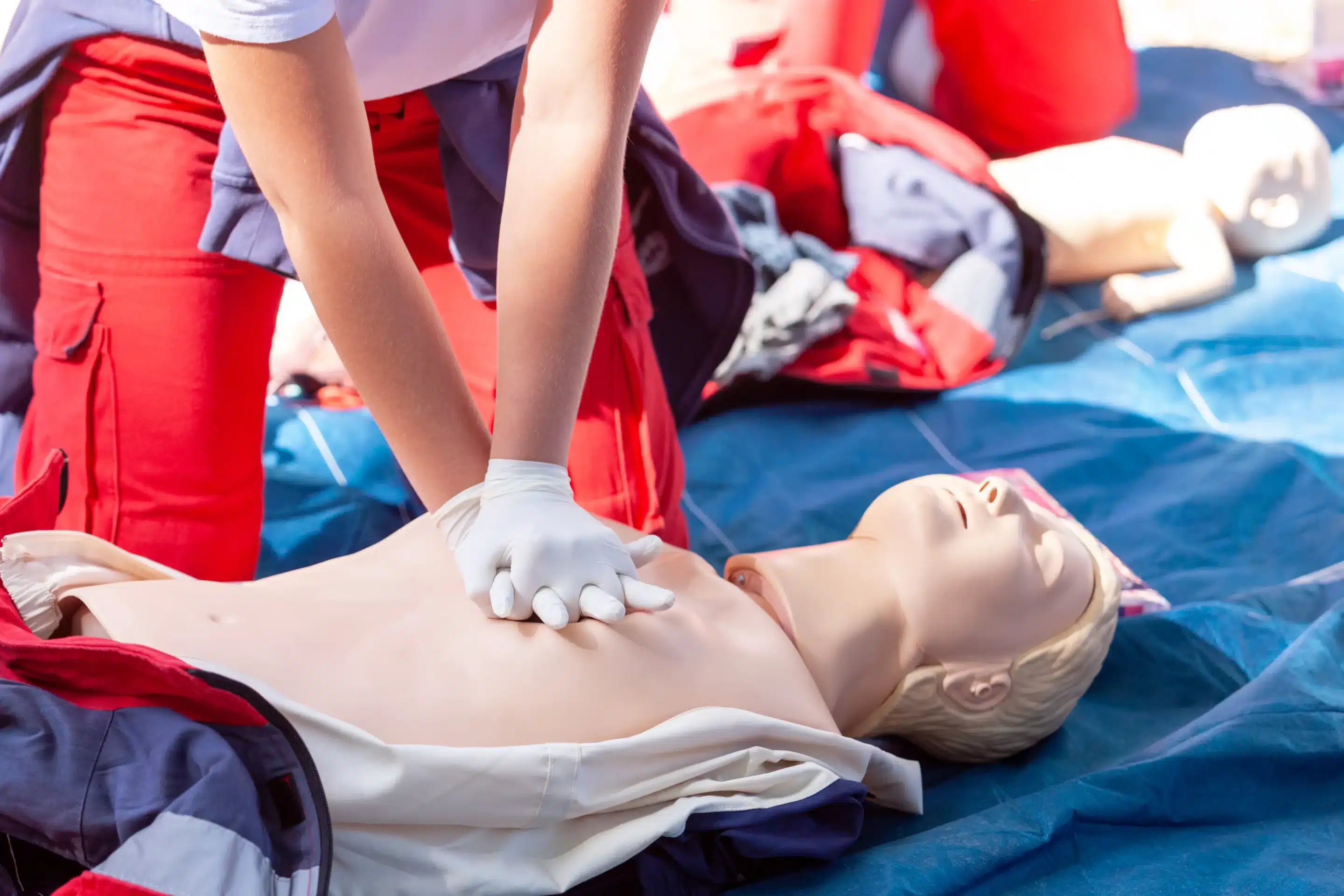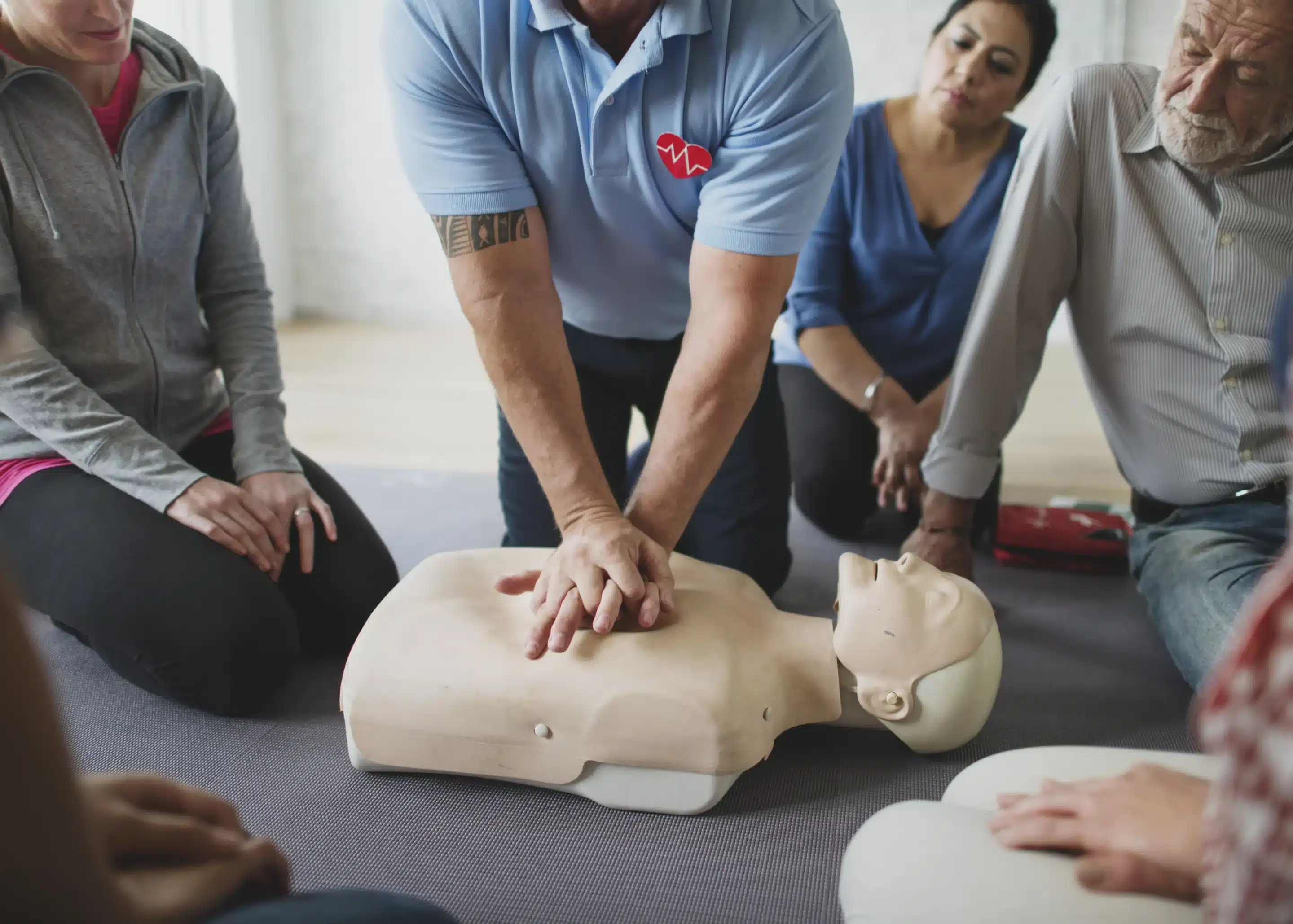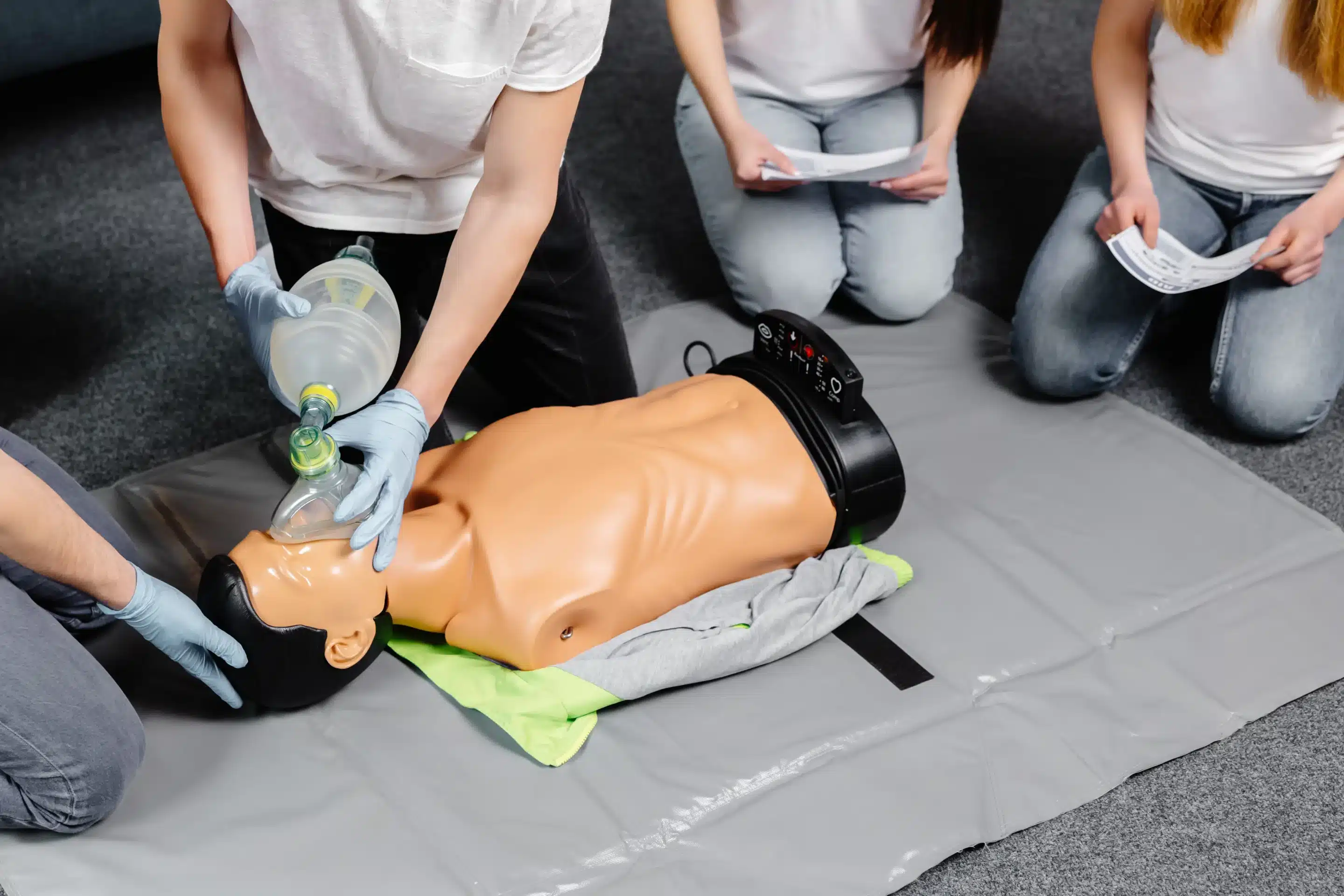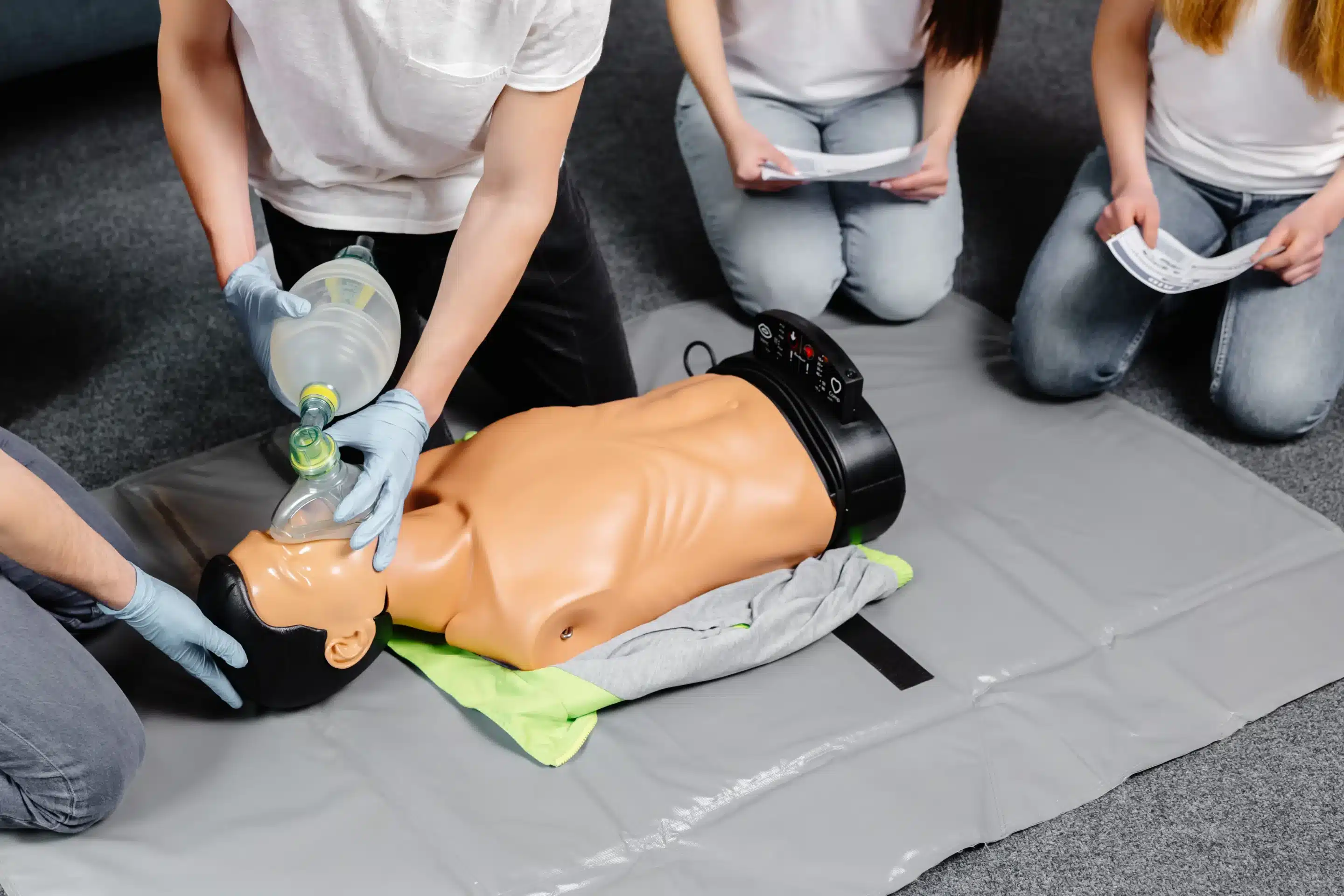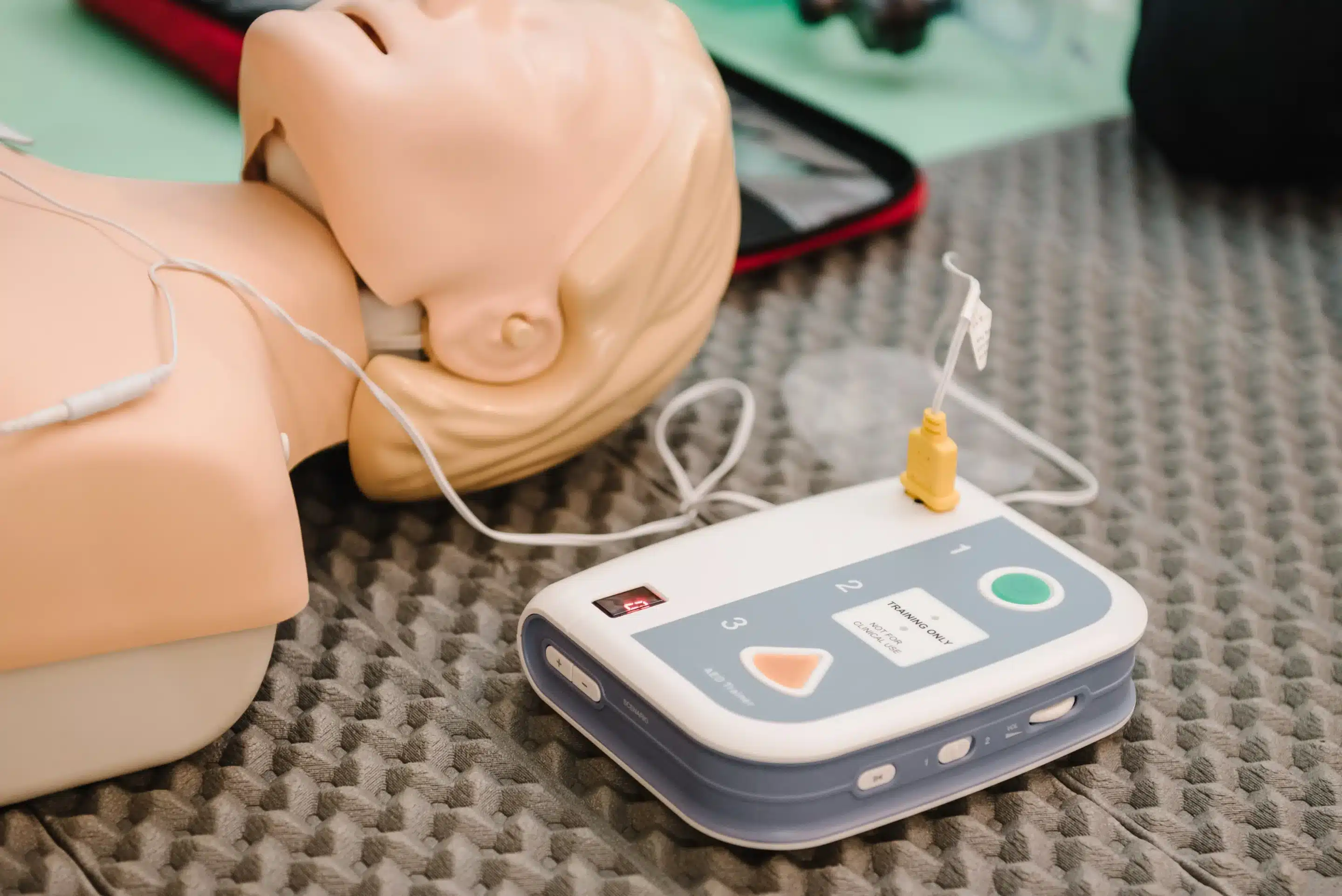Your BLS skills are invaluable, and keeping them sharp is crucial for confident and effective emergency response. Whether you’re a seasoned healthcare professional or someone who wants to be prepared for any situation, BLS recertification ensures you’re always ready to provide critical care. But where do you start? This guide simplifies the BLS recertification process, breaking down everything from finding local providers to understanding the latest guidelines. We’ll explore the different recertification formats available, discuss the key skills and techniques covered, and offer practical advice for preparing for your renewal. If you’re searching for “BLS recertification near me” in Bakersfield or Kern County, we’ll highlight local resources like Bakersfield CPR Classes to help you find the perfect course.
Key Takeaways
- Regular BLS recertification keeps your life-saving skills sharp. Stay up-to-date with the latest guidelines and best practices by renewing your certification every two years. Explore various course formats and providers to find the best fit for you.
- Choose a course format that aligns with your learning style and schedule. Whether you prefer the structured environment of in-person training or the flexibility of online learning, select the option that maximizes your learning potential.
- Proper preparation sets you up for recertification success. Review course materials, practice key techniques, and familiarize yourself with the latest guidelines to ensure a smooth and confident recertification experience.
What is BLS Recertification & Why Do You Need It?
This section covers the basics of BLS Recertification, including what BLS is, why it’s important, and how often you need to recertify.
What is BLS & Why is it Important?
Basic Life Support (BLS) is a level of medical care used for victims of life-threatening illnesses or injuries until they can receive full medical care at a hospital. It is a crucial step in improving patient outcomes during emergencies. BLS focuses on providing immediate support through techniques like CPR, recognizing respiratory distress, and relieving choking. These skills are essential for healthcare providers and anyone who might respond to emergencies. High-quality BLS training is a cornerstone of effective emergency response. While often associated with healthcare professionals, understanding BLS can be beneficial for everyone.
Recertification Requirements & Frequency
BLS certification, like many healthcare certifications, requires periodic renewal. The American Heart Association (AHA) requires recertification every two years to ensure your skills are current and you’re prepared to respond effectively in an emergency. This keeps you up-to-date with the latest guidelines and best practices in emergency care. You can renew your certification up to 30 days after it expires, giving you a small grace period. Staying certified ensures you can confidently provide assistance when needed and maintain your qualifications as a healthcare professional. Regular recertification demonstrates your commitment to providing high-quality care and reinforces the importance of consistent training in life-saving techniques.
Find BLS Recertification Courses Near You
So, your BLS certification is expiring—now what? Don’t worry, finding a recertification course is easier than you think. Whether you’re in Bakersfield or Kern County, several options are available to fit your schedule and learning style.
Local Providers in Bakersfield & Kern County
Bakersfield CPR Classes
Right here in Bakersfield, Bakersfield CPR Classes offers a variety of BLS renewal courses. Check their website or give them a call to learn about course content and included materials. Their convenient location and course schedule make renewing your certification straightforward.
American Heart Association
The American Heart Association (AHA) provides several options for renewing your BLS card, from online courses to traditional in-person classes. Visit their website to find a course that fits your needs and preferred learning style.
Red Cross
The Red Cross also offers BLS recertification courses. Known for their streamlined approach, they provide fast and easy BLS classes. This is a great option if you need a quick and efficient way to renew your certification.
Search Online for Local Courses
Beyond these providers, a quick online search can uncover even more options. Searching for “BLS recertification near me” will generate a list of local providers. Hospitals and clinics frequently offer BLS certification courses, often open to both staff and the community.
Check Provider Reviews & Ratings
Before committing to a course, take a few minutes to check reviews and ratings to see what other students have to say about their experiences. Word-of-mouth can be incredibly helpful. Ask colleagues for recommendations if they’ve recently completed a BLS course and had a positive experience.
Choose the Right BLS Recertification Format
Deciding on the best way to renew your BLS certification depends on your learning style, schedule, and comfort level with the material. Let’s break down the pros and cons of each BLS recertification format to help you make the best choice.
In-Person Courses: Benefits & Considerations
In-person BLS recertification courses offer a structured learning environment with direct interaction with instructors. This format excels at providing hands-on training and immediate feedback, which can significantly improve your retention of critical skills. You’ll also have the opportunity to ask questions and practice techniques in real-time with your instructor and classmates. Bakersfield CPR Classes offers in-person BLS renewal courses that follow the American Heart Association guidelines. These courses often use a blended learning approach, combining online coursework with an in-person skills session, ensuring you have both theoretical knowledge and practical experience. However, in-person classes require a greater time commitment due to travel and scheduled class times, so consider your availability.
Online Options: Flexibility & Requirements
Online BLS recertification courses offer unparalleled flexibility, allowing you to learn at your own pace and on your own schedule. This format is perfect for those with busy lives or limited access to in-person training locations. Many online courses are 100% online, eliminating the need for any in-person skills tests. Providers like Medicus Training offer this fully online option. However, it’s crucial to ensure the online course you choose meets the American Heart Association requirements for recertification. While online learning offers convenience, it requires self-discipline and motivation to complete the coursework independently.
Hybrid Learning: Combining Convenience & Hands-On Practice
Hybrid or blended learning programs combine the best of both worlds. You’ll typically complete the theoretical portion of the course online at your own pace, then attend a shorter, in-person skills session to practice and demonstrate your skills. The American Red Cross offers blended learning programs for BLS, allowing you to gain theoretical knowledge online while also practicing essential techniques in a hands-on environment. This approach offers a good balance of flexibility and practical application.
Select the Best Format for Your Needs
Ultimately, the best format for your BLS recertification depends on your individual learning style, schedule, and preferences. If you thrive in a structured environment and value hands-on learning, an in-person course might be the best fit. If you need flexibility and prefer to learn at your own pace, an online course could be a better option. And if you want a balance of both, a hybrid learning program might be the perfect solution. Consider your personal needs and choose the option that will best prepare you to provide high-quality BLS care. For more guidance on selecting the right path, check out these tips from Premiere Education.
What to Expect in a BLS Recertification Course
So, you’re ready to renew your BLS certification—smart move! This section covers what you’ll encounter during your recertification course, from essential skills to the latest guidelines.
Key Skills & Techniques Covered
BLS recertification courses cover core life-saving techniques. You’ll review adult, child, and infant CPR, including how to recognize and respond to choking emergencies. The course also reinforces proper AED use, familiarizes you with breathing barriers and bag valve masks, and prepares you for two-rescuer CPR scenarios. Expect a thorough review of how to manage various cardiopulmonary emergencies. For a deeper dive, this guide to BLS renewal offers additional details.
Guideline & Best Practice Updates
Healthcare best practices evolve, and BLS guidelines are no exception. Your recertification course will cover any updates to ensure your knowledge aligns with current standards. Staying informed on these changes is crucial for providing effective care and succeeding on the recertification exam. This article on common BLS recertification challenges offers helpful insights into potential pitfalls.
Course Duration & Time Commitment
BLS recertification courses are designed to be efficient. Many providers offer blended learning options, combining online coursework with in-person skills sessions. The online portion is typically self-paced and can be completed in a few hours, offering flexibility for busy schedules. The in-person skills assessment usually takes less than an hour. This BLS renewal guide provides a detailed breakdown of the time commitment.
Hands-On Practice & Skill Retention
Hands-on practice is key to retaining and mastering BLS skills. Recertification courses include in-person skills sessions where you’ll demonstrate your proficiency under the guidance of a certified instructor. This practical experience builds confidence and ensures you’re prepared to respond effectively in real-life emergencies. To learn more about the benefits of blended learning, which combines online learning with hands-on skills practice, check out this overview of HeartCode BLS.
Enroll in a BLS Recertification Course
Once you’ve found a course that works for you, it’s time to enroll. This section covers everything you need to know about the enrollment process, from gathering required documents to understanding associated costs.
Steps to Enroll
Enrolling in a BLS recertification course is usually simple. Most providers, including Bakersfield CPR Classes, let you register directly through their website. You’ll likely create an account, choose your preferred course date and time, and provide some basic information. Some providers might also handle enrollment over the phone or via email. Check with your chosen provider for their specific process.
Prerequisites & Required Documents
Before enrolling, confirm any prerequisites. You’ll need a current healthcare provider BLS card to show your previous certification. Some courses may also require the latest edition of the BLS Provider Manual from the American Heart Association. Having these materials ready will make enrollment smoother.
Typical Costs & Potential Discounts
BLS recertification courses typically cost around $75, but prices can differ based on location and provider. Look for potential discounts. For example, some providers offer lower rates for group enrollments, a smart choice if you’re organizing training for a team.
Payment Options & Financial Considerations
Most providers accept various payment methods, including credit cards and debit cards. If cost is a factor, explore financing options or scholarships through your employer or professional organizations. Recertifying a whole team? Ask about group discounts to reduce the total cost. Planning and exploring these options can make BLS recertification more budget-friendly.
Prepare for BLS Recertification Success
Getting ready for your BLS recertification doesn’t have to be stressful. With the right approach, you can confidently renew your skills and knowledge. Here’s how to prepare:
Review Course Materials & Study Guides
One of the biggest hurdles in BLS renewal is staying current with evolving guidelines and procedures. Refresh your knowledge by reviewing the most recent course materials. This will give you a solid foundation for the recertification process. The American Heart Association’s BLS resources are a great place to start. It’s crucial to be up-to-date on the latest practices, as changes occur periodically.
Use Practice Tests & Online Resources
Practice tests and online resources are invaluable tools for reinforcing what you’ve learned and identifying areas where you might need extra review. For online BLS recertification courses, pay close attention to specific requirements. You might need to complete modules in order or pass a quiz before moving on. Use practice tests to familiarize yourself with the exam format and build your confidence. Many providers, including Bakersfield CPR Classes, offer online resources and practice tests.
Tips for Successful Recertification
Here are a few tips to help you succeed:
- Stay Updated: Keep up with the latest BLS guidelines and protocol changes. This will prevent any surprises during the recertification test. Resources like the American Heart Association website are great for this.
- Practice Your Skills: Hands-on practice is essential for retaining BLS skills. Consider practicing with a friend or family member.
- Manage Test Anxiety: If you get nervous before tests, explore relaxation techniques like deep breathing or meditation to stay calm and focused.
- Financial Assistance: Look into potential discounts or financial aid options that may be available for recertification.
Address Common Challenges & Concerns
It’s normal to have questions or concerns about recertification. If you’re unsure about anything, reach out to your course provider. They can clarify any confusion and provide support. Understanding common challenges can help you prepare more effectively. For example, be aware that guidelines are updated regularly. If you’re not familiar with these updates, you might be caught off guard during the exam. Being prepared and informed will make the process much smoother. For further insights into common barriers and incentives related to BLS training, check out this study on student readiness for BLS training.
Related Articles
- BLS Courses in Bakersfield: The Ultimate Guide – Bakersfield CPR Classes
- BLS Renewal in Bakersfield: Your Easy Guide – Bakersfield CPR Classes
- BLS for Healthcare Providers in Rosedale: A Guide – Bakersfield CPR Classes
- BLS Certification Bakersfield: Your 2024 Guide – Bakersfield CPR Classes
- BLS Training in Oildale: A Guide for Healthcare Workers – Bakersfield CPR Classes
Frequently Asked Questions
How often do I need to renew my BLS certification? BLS certification through the American Heart Association needs to be renewed every two years. This ensures your skills and knowledge are up-to-date with the latest guidelines. You have a 30-day grace period after your certification expires to recertify.
What’s the difference between online and in-person BLS recertification? Online recertification offers flexibility, letting you learn at your own pace from anywhere. In-person classes provide a structured environment with hands-on practice and direct instructor feedback. Many providers offer hybrid courses that combine online learning with an in-person skills session.
What if my BLS card is already expired? If your BLS card is expired, you can still renew it within the 30-day grace period. After that, you’ll likely need to take the full BLS course again rather than a recertification course. Contact your chosen training provider to confirm their policy.
How much does BLS recertification cost? The cost of BLS recertification varies depending on the training provider and location, but it typically averages around $75. Some providers offer discounts for group registrations or other special offers. It’s always a good idea to check with the provider for their specific pricing.
What if I have more questions about BLS recertification? If you have additional questions, reach out to your chosen course provider directly. They can provide specific details about their courses, costs, and any other requirements. You can also consult the American Heart Association website for the most up-to-date information on BLS guidelines and training standards.


